Are you planning a visit to Montana soon? If so, you’re in for a treat!
Montana is known for its stunning landscapes and fascinating wildlife, including their official state bird.
The conspicuous and colorful winged creature, with its yellow breast and suites of song, is a familiar-looking avian to anyone who has spent time in grassland habitats.
As an insect-eating ground-nesting bird, the Western Meadowlark is one of the many grassland avian broods that requires specific nest sites and materials to thrive.
In this article, I’ll be discussing this winged creature and exploring why it’s such an integral part of Montana’s ecosystem.
- Related article: Montana State Icons
So whether you’re a feathered species enthusiast or simply curious about Montana’s wildlife, this article will give you a closer look at one of the state’s most unique species!
State Bird: Does Every State Have It?
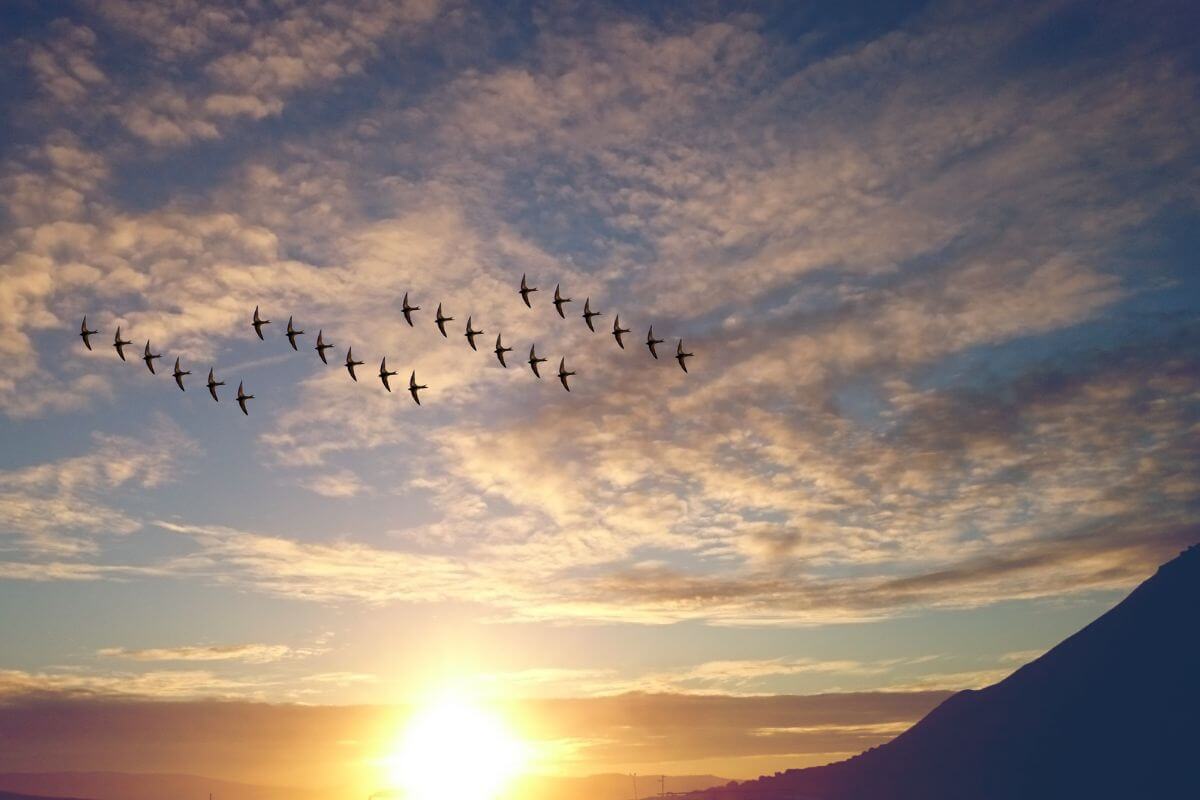
The concept of a state avian is a widely recognized symbol of regional identity and pride.
Each state in the United States has its special state bird, and in Montana, the Western Meadowlark, or Sturnella neglecta, has been given this honor.
This tells us a lot about the incredible diversity found across the country.
It’s interesting to see how tradition, politics, and the study of avians have all come together to shape the unique identities of different regions.
The presence of a state avian reflects the fascinating interplay between these factors, revealing the cultural and natural heritage of each state.
It’s like a window into the rich tapestry of traditions and environments that make each state truly one-of-a-kind.
This connection also comes across in the Big Sky Country’s relationship with the grizzly bear, the animal of Montana, another fascinating creature to behold.
Montana’s State Bird: The Western Meadowlark
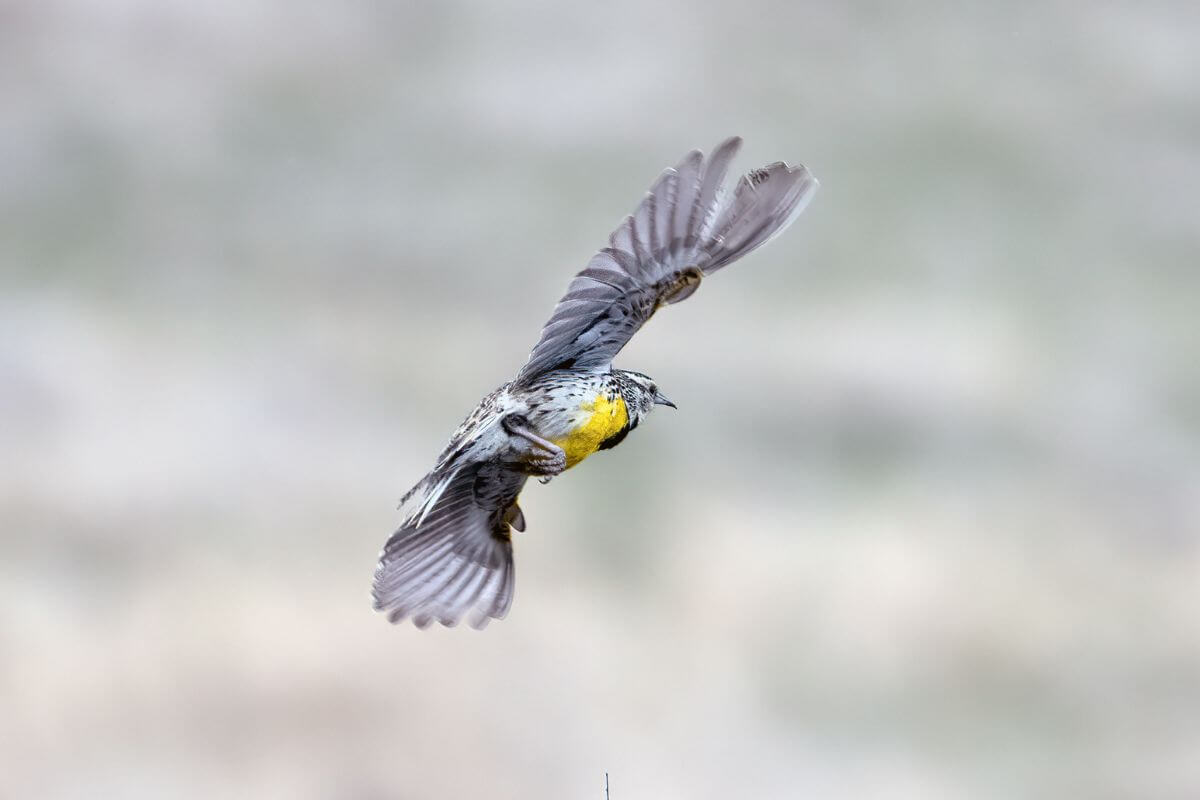
Sturnella neglecta is an avian that genuinely represents the beauty of Montana. Its pleasant song and stunning appearance enhance the picturesque landscape of the state.
In June 1805, Meriwether Lewis, during his famous expedition, was the first to document this charming winged creature. He observed and compared it to the Eastern Meadowlark in the Great Falls area.
Back in 1930, schoolchildren throughout Montana selected the meadowlark as the avian that best symbolized their state.
In 1931, the legislature officially declared the Western Meadowlark as Montana’s state bird.
The Western Meadowlark’s Physical Attributes
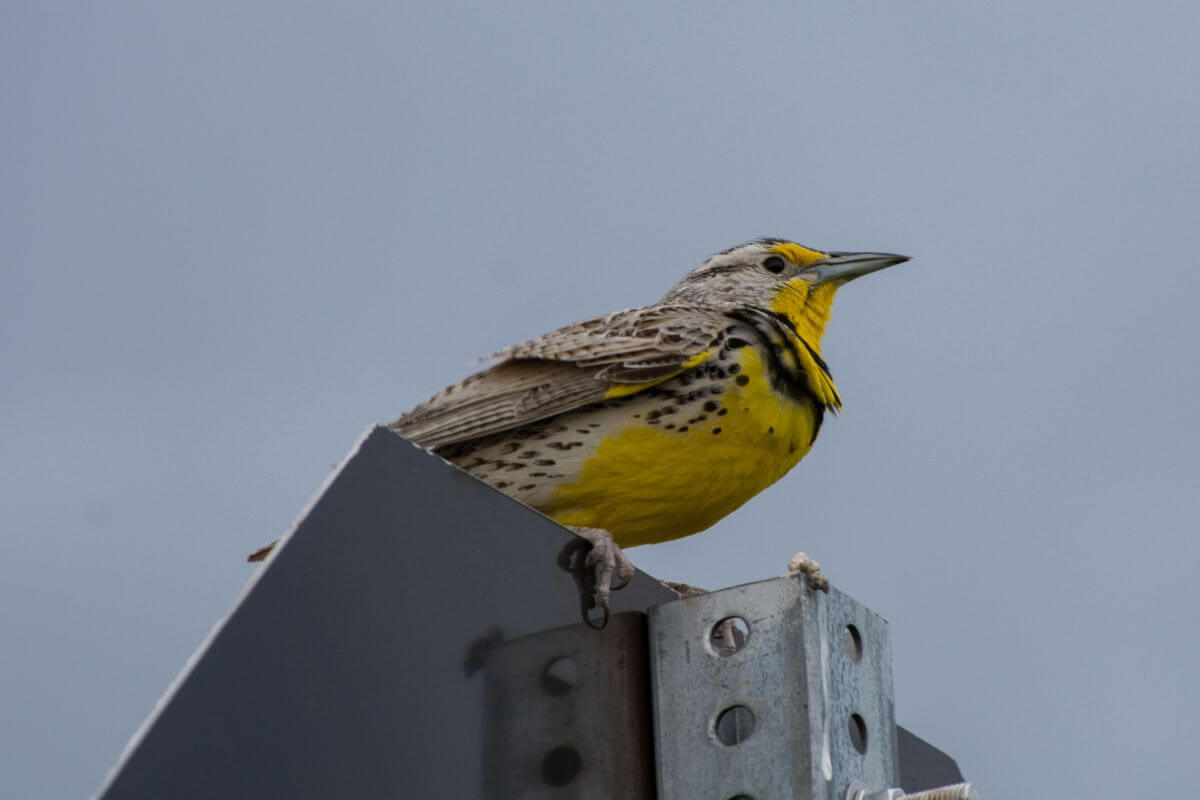
Adult Sturnella neglecta have a black and white striped head, yellow cheeks, and bright yellow underparts with a bold black V shape on the breast.
These colors help them blend in perfectly with the open grasslands where they live.
The Western Meadowlark is about 8.5 inches long and has a pointed bill.
It belongs to the blackbird family and has distinctive physical features that make it easily noticeable in any habitat.
Its underparts are a vibrant yellow breast with the characteristic black “V”. The white flanks provide a beautiful contrast with black streaks.
The upper parts are brown with black streaks, and the tail is brown with white feathers at the outer end.
Juvenile and winter plumages may be a bit duller but still have a black spot on the throat.
The Western Meadowlark’s Habitat
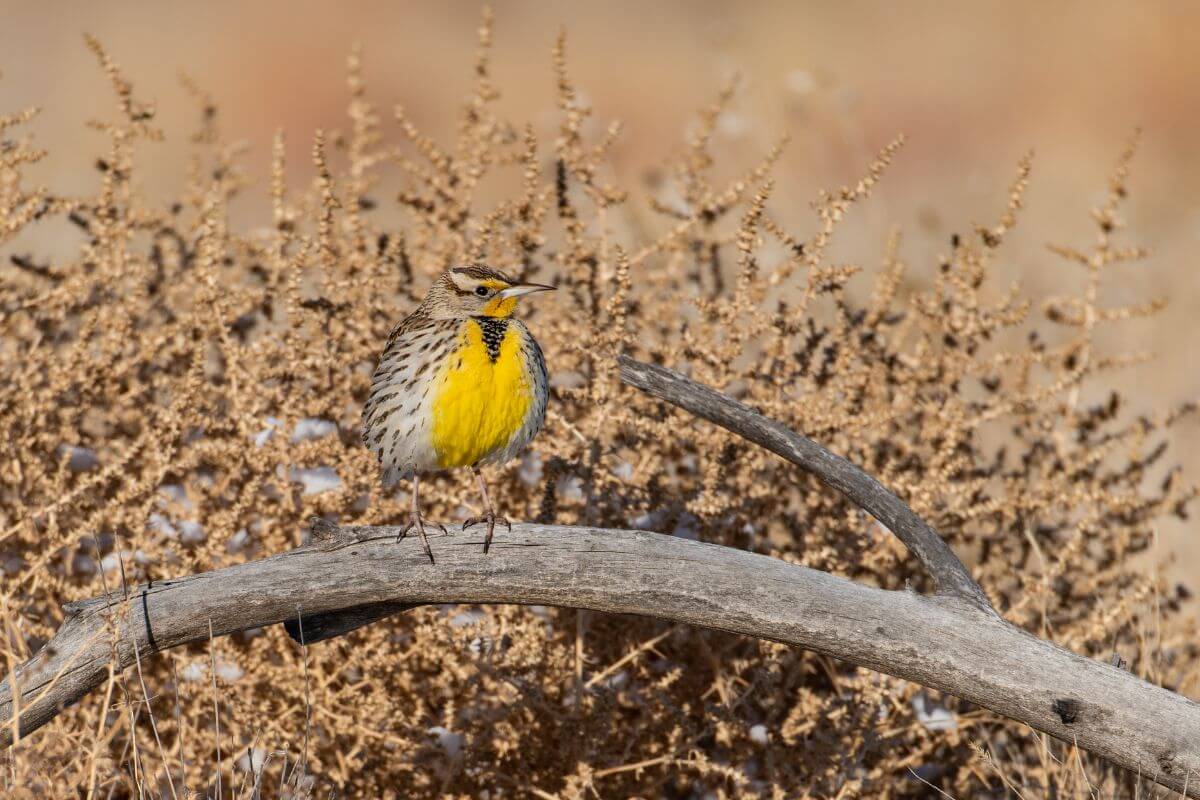
The Western Meadowlark is a bird that typically lives in open grasslands, savannas, shrublands, cultivated fields, and pastures.
During the breeding season, it can be easily spotted as it prefers to build its nests in native grasslands and prairies.
However, in winter, they prefer habitats such as sagebrush areas and agricultural lands with open spaces where they can find insects to feed on.
This flying creature is found across the western two-thirds of the United States and is commonly seen in North America and states like Montana, North Dakota, and Oregon.
The Western Meadowlark’s Diet
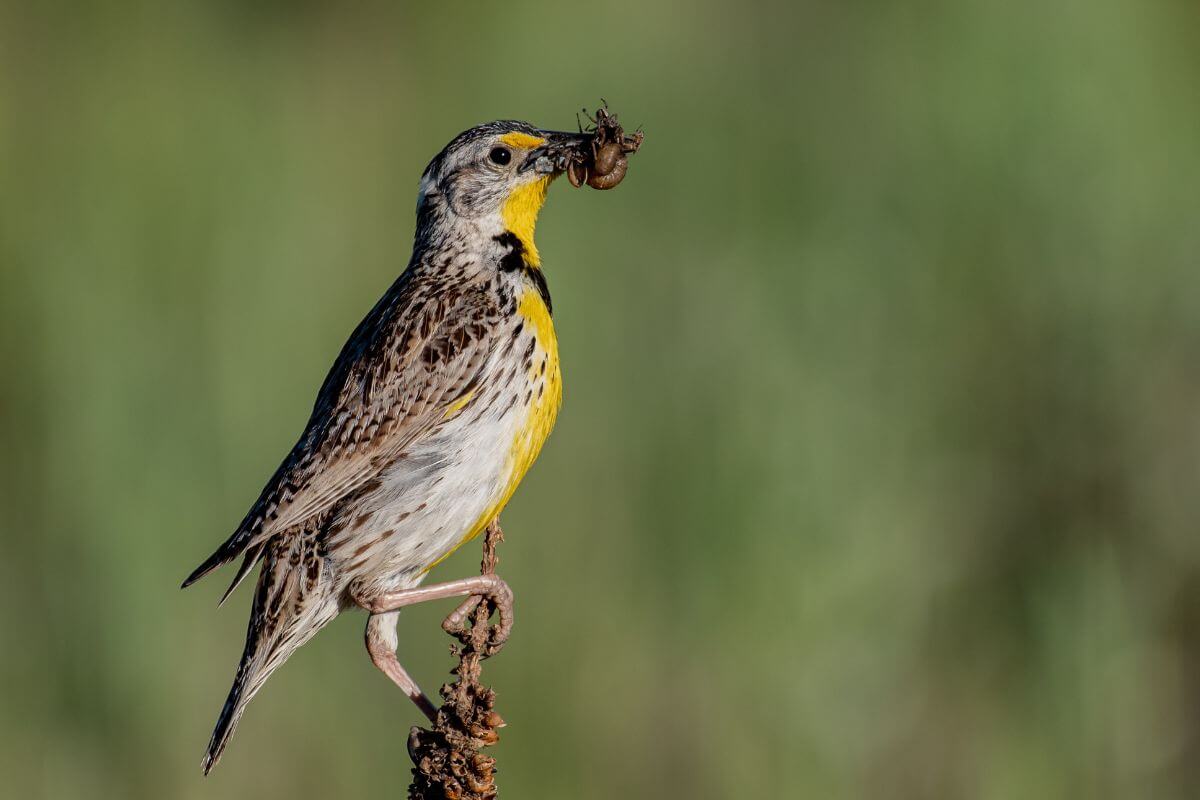
As an insect-eating avian, the Western Meadowlark has a diverse palate that includes a variety of food items such as small amphibians and reptiles, seeds, and berries.
This common species forages on the ground, using a feeding behavior called “gaping” to access foods that other winged creatures can’t reach.
During the non-breeding season, it’s not uncommon to see them foraging in mixed flocks of blackbirds and starlings.
Their foraging habits often revolve around seeds and grains, constituting a significant portion of their winter diet.
Approximately 65 to 70% of their diet during this period consists of these small invertebrates.
Their sharp, pointy bills and strong jaw muscles are used to drive into the soil, bark, or other surfaces, tearing open holes that provide access to nutritious morsels that other avians can’t reach.
The Western Meadowlark’s Nesting Traits
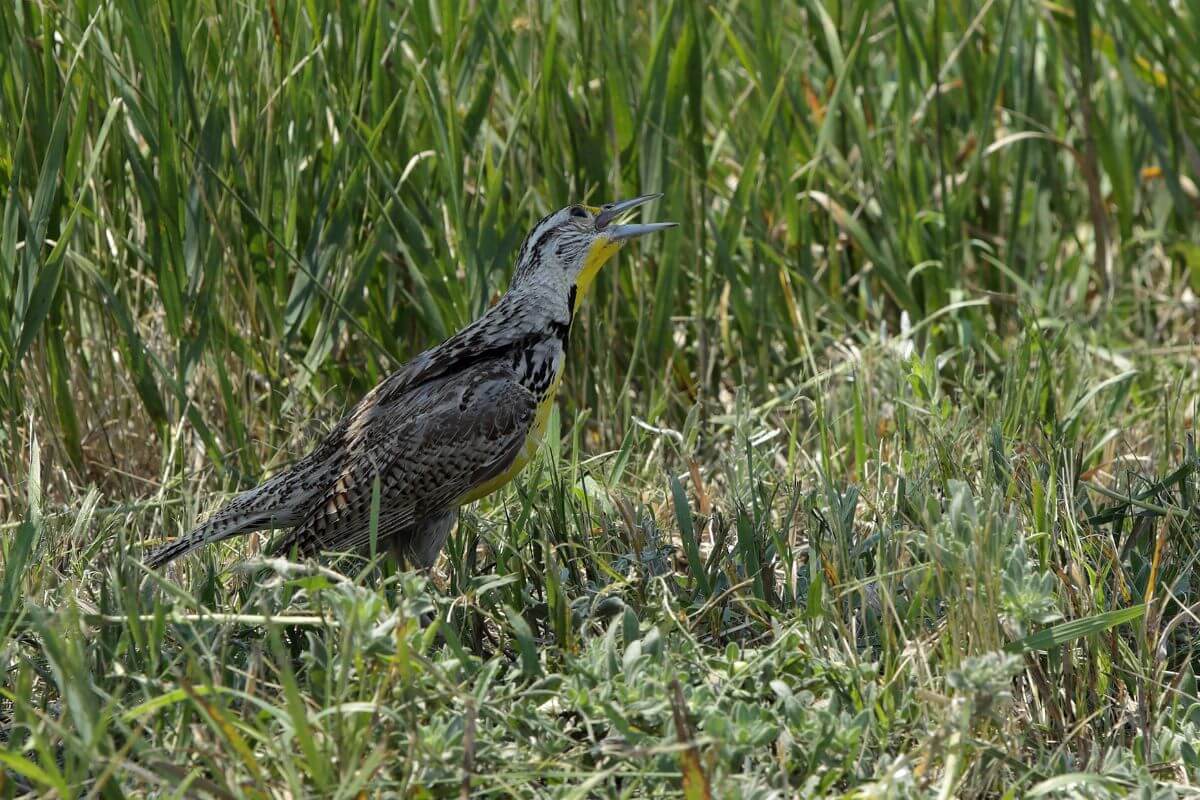
The Western Meadowlark has a preference for nest sites close to the ground and often chooses a natural depression or digs one in the soil.
The female avian takes about 3 to 8 days to construct a loosely woven cup using grasses, forbs, and other fine materials for its nest.
Once the nest is built, the female meadowlark lays approximately 3-7 eggs. These eggs have brownish spots on a white background, similar to the Eastern Meadowlark.
The female incubates the eggs for around 14 days, sometimes even before laying the last egg. The hatchlings leave the nest about 10 to 12 days after hatching.
Brown-headed Cowbird (Molothrus ater) is a parasite to the Western Meadowlark nests, which happens up to 22% of the time.
To make up for the eggs that are lost because of this or from other predators, the female meadowlark may raise two broods in one season.
Male meadowlarks, on the other hand, are often polygamous with two females nesting within their territory.
Montana’s State Bird Final Thoughts
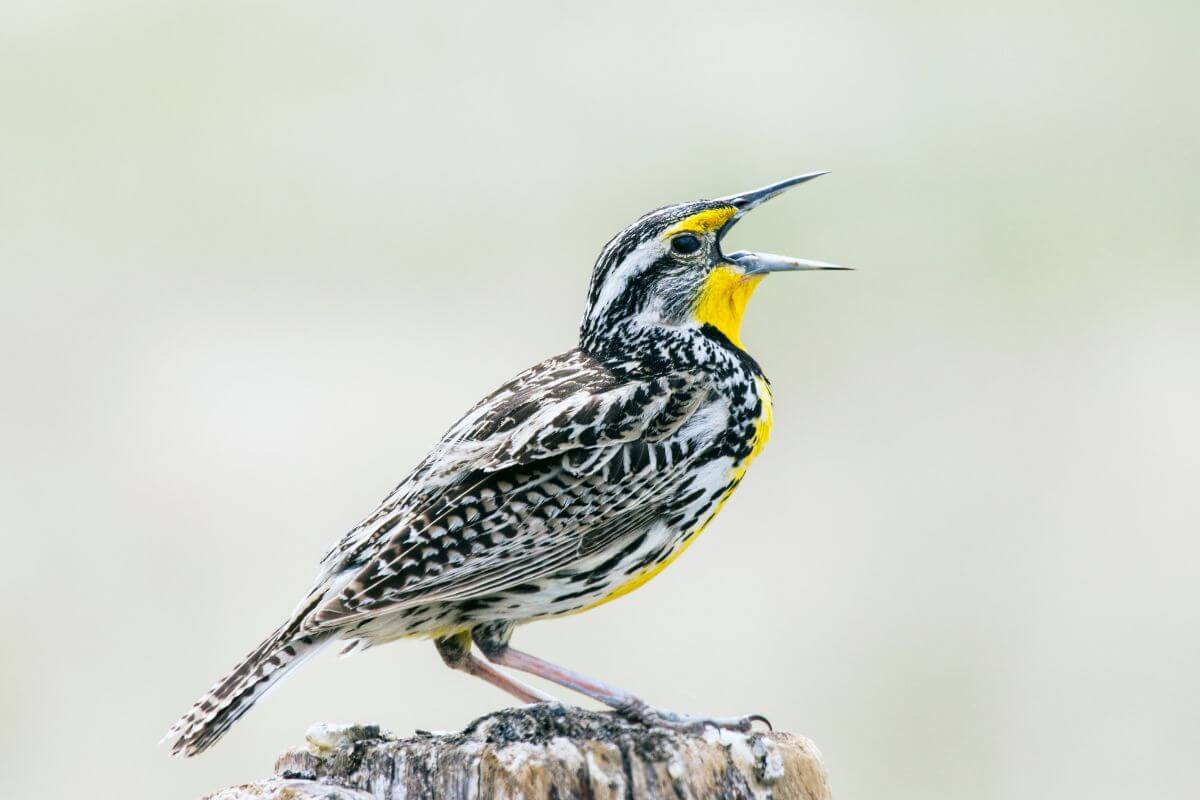
Montana’s State Bird is beautiful, known for its striking appearance and pleasant song, which perfectly captures the state’s beauty.
With its black and white striped head and vibrant yellow underparts, it effortlessly blends into the grasslands where it lives.
This avian can be found in various habitats like grasslands, shrublands, and agricultural lands.
It feeds on insects, seeds, and berries, using its special feeding behavior to access food sources that other birds can’t reach.
When it comes to nesting, this winged creature constructs loosely woven cups close to the ground and lays 3-7 eggs.
It faces challenges, such as nest parasitism from the Brown-headed Cowbird, but it adapts by potentially raising multiple broods in a season.
State birds like the Western Meadowlark offer a glimpse into the diverse traditions, environments, and natural wonders that make each state in the United States truly unique.
Montana State Bird FAQs
1. What Is the State Bird of Montana?
Montana’s official bird is the Western Meadowlark, a colorful avian also known as Sturnella neglecta. Its distinctive appearance includes a bold yellow chest and brown streaks.
2. Why Was the Western Meadowlark Chosen as Montana’s State Bird?
In 1930, Montana schoolchildren selected a conspicuous avian as the state bird due to its brightly colored nature.
The following year, the legislature officially named the Western Meadowlark as the official state bird after undergoing the legislative process.
3. Where Can the Western Meadowlark Be Found?
The Western Meadowlark can be found in various states, including Montana, North Dakota, and Oregon.
This bird breeds across Canada from British Columbia to Lake Ontario and south along the Pacific Coast to northern Baja California, Arizona, New Mexico, and the central plateau of Mexico.
During the winter months, northern breeding populations move as far south as the coastal plains of Mexico, Baja California, and the United States Gulf Coast.
4. Will Climate Change Affect Western Meadowlark?
The Sturnella neglecta, a bird that primarily consumes insects, faces increased vulnerability to water loss due to its reliance on moisture obtained from its insect diet.
Climate change has led to a 30% rise in their water requirements, potentially forcing them to capture an extra 60-70 insects per day for survival.
However, the availability of these insects is uncertain, contributing to the decline in population observed in bird species like the Western Meadowlark.
5. Which Other States Have the Western Meadowlark as Their State Bird?
The Western Meadowlark is not just a beloved native bird, it also holds the esteemed title of state bird in six states, namely Montana, Kansas, Nebraska, North Dakota, Oregon, and Wyoming.
6. Why Do the Eastern and Western Meadowlarks Not Mate With Each Other?
At first glance, this yellow-chested, ground-nesting bird and the Eastern meadowlark may appear identical, as their ranges overlap. However, their bird songs are distinct, so they do not interbreed.
If you want to learn more about Montana, keep your mind engaged with these articles:
- https://digitalatlas.cose.isu.edu/bio/birds/sngbrd/icterids/weme/weme_mai.htm
- https://www.mbr-pwrc.usgs.gov/Infocenter/i5011id.html
- https://digitalatlas.cose.isu.edu/bio/birds/sngbrd/icterids/weme/weme_mai.htm
- https://tourism.oregonstate.edu/western-meadowlark-sturnella-neglecta/
- https://txtbba.tamu.edu/species-accounts/western-meadowlark/
- https://news.berkeley.edu/2019/09/30/collapse-of-desert-birds-due-to-heat-stress-from-climate-change/
- https://evolution.berkeley.edu/biological-species-concept/
- https://wgfd.wyo.gov/News/Western-meadowlark-emergence-marks-the-beginning-o

